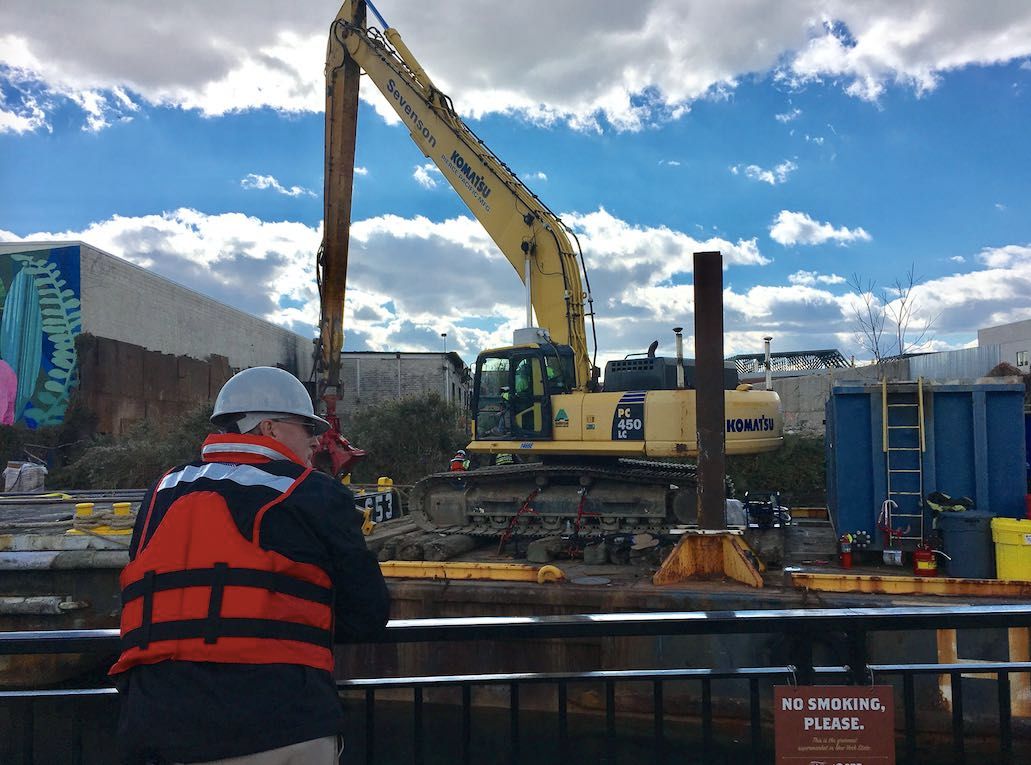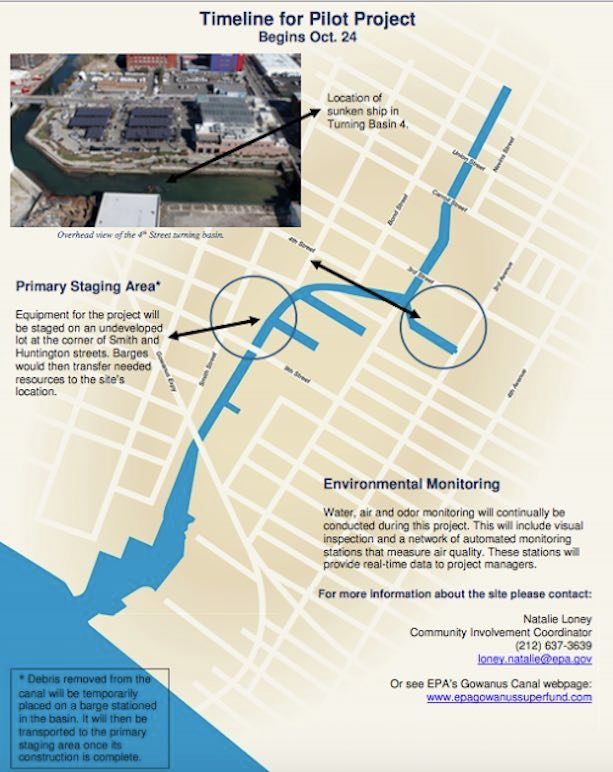Next To Whole Foods, Submerged Shopping Carts And Boats Scooped Up In Gowanus Canal Pilot Project


(function(d, s, id) { var js, fjs = d.getElementsByTagName(s)[0]; if (d.getElementById(id)) return; js = d.createElement(s); js.id = id; js.src = "//connect.facebook.net/en_US/sdk.js#xfbml=1&version=v2.8"; fjs.parentNode.insertBefore(js, fjs); }(document, 'script', 'facebook-jssdk'));
While customers at Whole Foods were filling their shopping carts with organic veggies and environmentally safe cleaning products, a vastly different environmental cleanup was beginning a few hundred feet away.
The 4th Street turning basin of the Gowanus Canal next to the Whole Foods parking lot is humming as the Debris Removal Pilot Project has begun for the heavily polluted canal, which was declared a Superfund site in March 2010.
While it may be a small step, the Gowanus cleanup has finally begun.
For those following the cleanup process, the presence of cranes, barges, and Environmental Protection Agency workers was reason enough for excitement.
One doesn’t need to be an expert to see the filth gathered in the canal. However, the EPA is now beginning to remove large chunks of underwater debris which “could restrict future barge access and hamper dredging of contaminated sediment from the bottom of the basin,” according to an EPA document.

The pilot project, which the EPA expects to last between 3-4 weeks, began on Monday, October 24 near the intersection of 4th Street and 3rd Avenue.
“It’s pretty clear what’s at the bottom of the canal,” said Natalie Loney, Community Involvement Coordinator for the EPA. “There are bicycles, shopping carts, and other large objects.”
36 large objects, to be specific. They’ll be removed from the area, according to the EPA — including two boat wrecks. However, Loney did say “there may be some surprises.”
A sonar scan allowed the EPA to map out the debris, so they are clear about the location of the objects. The EPA coordinated the plan with the State Historical Preservation Office, determining that the shipwrecks are not “historically significant.”
First Day of Debris Removal, 4th St. Turning Basin of the Gowanus Canal. Oct 24, 2016.
Posted by Bklyner on Monday, October 24, 2016
Once the debris is collected, the barges will transfer it over to a “staging area” located at an undeveloped lot at the corner of Smith and Huntington Streets. Debris will not be carted out by trucks for this process.
The concern of debris being removed overland comes into play in relation to the decision about the replacement of the 111-year-old Union Street Bridge. If a fixed (flat) bridge is chosen over a drawbridge, there’s a strong possibility that barges may not be able to move underneath it due to the height of the bridge. The EPA — which is in charge of cleaning up the Superfund site — would need to plan alternatives in order to do the removal should they be unable to use barges to remove the sludge.

While objects being removed from the canal contain toxicity, the EPA said they are conducting water, air, and odor monitoring throughout the process — with real-time data.
The pilot program also serves as an opportunity for the EPA to gather information as to the most effective ways to move the project forward. “We’re going to find out what lessons can be applied for future dredging,” Loney said.
According to the EPA, the entire cleanup cost is estimated at $506 million, with full completion by 2022.
The next step for the 4th Street Canal basin will be the capping of sediment, which the EPA plans to do in 2017. A multi-layer cap “will be placed in dredged areas of the canal to isolate the contamination that will remain in the native sediment after dredging,” according to the EPA.
When asked about how the work happening here relates to the polluted Newtown Creek, Loney said the projects were very different in scope. “I’m a Gowanus girl,” she said.



